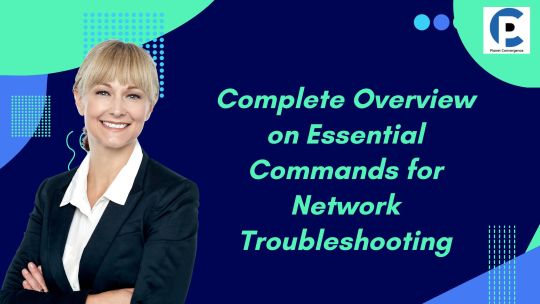#Cloud network management
Text
Maximizing Network Performance: A Comprehensive Guide to GCP's Network Intelligence Center
Discover, monitor, and optimize your network with GCP's Network Intelligence Center! 🔍✨ #GoogleCloud #NetworkMonitoring #CloudOptimization
In today’s fast-paced digital world, a reliable and finely-tuned network infrastructure is absolutely vital for the triumph of any organization. As cloud environments grow more intricate, the task of overseeing and enhancing network performance can seem overwhelming. Yet fear not, for the Google Cloud Platform (GCP) presents an extraordinary solution: the Network Intelligence Center. Join us on…

View On WordPress
#azure#cloud#Cloud network management#Connectivity tests#Cybersecurity#Firewall insights#GCP Network Intelligence Center#google cloud platform#Internet intelligence#network monitoring#Network optimization#Network topology#Network troubleshooting#Networking#Packet mirroring#Performance dashboard#Reachability tests#Routing visibility#Security#VPN insights
1 note
·
View note
Text

Know Essential Commands For Network Troubleshooting
Ensuring the optimal operation of Technology Solutions and Services and preserving smooth connectivity depend heavily on network troubleshooting. We'll go over the key network troubleshooting commands in this article, which allow admins to quickly locate and fix problems. These instructions are essential for figuring out network setups, identifying connectivity issues, and maintaining a safe and dependable network architecture.
#Network Troubleshooting#Cloud network management#Technology Solutions and Services#IT Solutions and Services#customized network tech services#Cloud infrastructure management#Infrastructure as a service (IaaS)
0 notes
Text
#seo services#web development#social media marketing#consulting#website maintenance#ecommerce#Cloud Solutions#Networking Solutions#Software Define Networking#Data Centre#Virtualization Services#Internet of Things#Security Solutions#IT managed services#Network Architecture Design & Implementation#IT Facilities Managed Services#Annual Maintenance Contract#Relocation Migration Plan & Implementation
3 notes
·
View notes
Text
How to Effectively Manage Remote Servers

Today, the ability to manage remote servers is what differentiates failure from business success. Whether you are an IT professional or running your own business, getting a grip on remote server management is elementary. This article guides you through basic, easy-to-understand language steps, from setting up your server to getting the most out of it.
Continue Reading...
#Business Technology Management#Cloud Servers#cybersecurity#Data Center Management#digital transformation#IT infrastructure#IT Management#IT Operations#Network Administration#Network Security#Remote Access#Remote IT Support#Remote Server Management#Remote Work Solutions#Server Backup Solutions#Server Configuration#Server Maintenance#Server Optimization#Server Performance#Server Setup#Server Tools#Server Troubleshooting#SSH Access#System Monitoring#VPN Security
0 notes
Text
#Industrial Cybersecurity Market#Cybersecurity#Network Security#Cloud Security#Cloud computing#Endpoint Security#Threat Management#Industrial Cybersecurity
0 notes
Text
Top Legal Technology Solutions Companies

In today's fast-paced world, the legal profession is experiencing a profound transformation, and it's all thanks to the rapid advancements in legal technology. Gone are the days when legal professionals relied solely on paper-based records, endless hours of research, and face-to-face consultations. Legal technology is ushering in a new era, offering greater efficiency, transparency, and accessibility in the legal field. This editorial will explore the evolution of legal technology and the profound impact it has had on the practice of law.
#IT infrastructure#managed network services#process standardization#innovation#digital transformation#remote workstations#hybrid working#cloud management services#AI#machine learning#global market#outsourcing#revenue generation#Enterprise Networking Magazine#thought leadership#industry experts#market trends#virtual care services#partnership#efficient technology.
0 notes
Text
Top Takeaways from Workday’s 2024 Innovation Summit
Workday’s annual Innovation Summit promises to provide IT industry analysts with insights into the vendor’s achievements, current initiatives, and future directions. This year’s Summit, held again at one of my favorite spots—Cavallo Point in Sausalito—lived up to its billing. During a day and a half of sessions, Workday executives discussed why and how Workday is positioned to lead in the…

View On WordPress
#AI#Cloud Computing#Financial#financials#HCM#midmarket#partner network#platform#skills building#SMB#talent management
0 notes
Text
Optimizing Operations with Network Automation: Best Practices and Solutions

Network Automation is a game-changer in the realm of IT operations, offering a plethora of benefits for optimizing network management tasks. To harness its full potential, organizations must adopt best practices and implement effective solutions. In this blog post, we will explore some key best practices and solutions for optimizing operations with Network Automation.
Automating Routine Tasks
The cornerstone of Network Automation lies in automating routine tasks such as configuration changes, device provisioning, and network monitoring.
By automating these repetitive tasks, organizations can streamline operations, reduce manual errors, and improve overall efficiency.
Utilizing Orchestration Tools
Orchestration tools play a crucial role in managing and coordinating automated processes within the network.
Network Automation tools provide a centralized platform for designing, executing, and monitoring automation workflows, ensuring seamless integration and efficient operation.
Implementing Self-Healing Mechanisms
Self-healing mechanisms leverage Network Automation to detect and remediate network issues automatically.
By implementing proactive monitoring and alerting systems coupled with automated remediation scripts, organizations can minimize downtime and improve network reliability.
Integrating with Monitoring and Analytics
Integrating Network Automation with monitoring and analytics tools enhances visibility and insight into network performance.
By collecting and analyzing real-time data, organizations can identify trends, predict potential issues, and proactively optimize network resources.
Standardizing Configuration Management
Standardizing configuration management practices is essential for maintaining consistency and compliance across the network infrastructure.
Network Automation enables organizations to enforce standardized configurations, ensure adherence to security policies, and streamline auditing and compliance processes.
Implementing Change Management Processes
Implementing robust change management processes is critical for managing network changes effectively.
Network Automation can facilitate change management by automating change requests, approvals, and deployment processes, ensuring minimal disruption and maximum efficiency.
Get More Insights On This Topic: Network Automation
#Network Automation#IT Automation#DevOps#Network Management#Automation Tools#Software Defined Networking#Infrastructure Automation#Cloud Computing
0 notes
Text
Unlock the potential of SAP Business Network for Logistics with us. Enhance your supply chain operations, maximize efficiency, and improve collaboration today!
#business network for logistics#sap bn4l#sap business network for logistics#sap logistics business network#sap business network#sap supply chain management#supply chain visibility solutions#sap in business#lbn sap#supply chain#supply chain performance#sap cloud platform
1 note
·
View note
Text
https://justpaste.it/b4afa
Is your current IT infrastructure starting to feel like a pair of outdated shoes? Reliable, sure, but maybe a little worn and hindering your ability to move forward. In today's fast-paced business world, you need agility and flexibility to stay competitive. That's where hybrid cloud infrastructure comes in.
#cloud services houston#enterprise network architect services#cloud computing houston#cloud based network security#houston managed it#intelligent architecture consulting#cloud computing in houston#cybersecurity consulting#secure cloud computing
0 notes
Text
#Industrial Cybersecurity Market#Cybersecurity#Network Security#Cloud Security#Cloud computing#Endpoint Security#Threat Management#Industrial Cybersecurity
0 notes
Text
Microsoft Intune Cloud PKI and Certificate Templates
Microsoft recently announced the general availability of its new PKI-as-a-Service platform called Microsoft Intune Cloud PKI. With Intune Cloud PKI, administrators create certification authorities (CAs) to issue and manage user and device authentication certificates for Intune-managed endpoints. Cloud PKI also provides hosted Authority Information Access (AIA) and Certificate Revocation List…

View On WordPress
#Active Directory#Active Directory Certificate Services#AD#AD CS#ADCS#AIA#authentication#CDP#certificate#certificate authority#certificate template#certificates#Certification Authority#Cloud PKI#CRL#encryption#endpoint manager#InTune#Intune Cloud PKI#MEM#Microsoft#Microsoft Endpoint Manager#Microsoft Intune Cloud PKI#NDES#Network Device Enrollment Service#PKI#public key infrastructure#SCEP#security#Simple Certificate Enrollment Protocol
0 notes
Text
Success in the Cloud: Realizing Results with Azure Infrastructure Services

In today’s rapidly evolving business landscape, the use of cloud technology has become essential for organizations looking to stay competitive and optimize their operations. With the rise of remote work and the need for scalable and efficient solutions, cloud computing has emerged as a powerful tool for businesses of all sizes. Among the many cloud service providers, Microsoft Azure stands out as a leader in the industry, offering a comprehensive set of Infrastructure as a Service (IaaS) solutions. However, achieving success in the cloud requires more than just adopting the latest technology. It requires a strategic approach and a deep understanding of how to leverage the capabilities of Azure Infrastructure Services to drive results for your organization. In this article, we will explore the key elements of success in the cloud and how Azure Infrastructure Services can help businesses realize their goals and stay ahead in today’s competitive market. From cost savings to increased flexibility, we will delve into the top reasons why Azure is the go-to choice for organizations seeking to harness the power of the cloud. So, let’s dive in and discover how Azure Infrastructure Services can elevate your business to new heights of success.
1. Boost business productivity with Azure.
As businesses continue to evolve in the digital age, the demand for efficient IT network management and reliable cloud infrastructure services has become paramount. One platform that has proven its worth in this regard is Azure, Microsoft’s comprehensive suite of cloud computing solutions. With Azure, organizations can streamline their operations, enhance collaboration, and leverage advanced analytics to drive growth and innovation. By harnessing the power of Azure’s robust infrastructure, businesses can optimize their resource allocation, scale effortlessly, and enjoy the benefits of enhanced security and data protection. As a trusted partner, SherpaCorner.com offers expert guidance and support in helping businesses navigate the Azure landscape, ensuring a seamless transition to cloud-based solutions that can truly transform productivity and deliver tangible results.
2. Cost-effective solutions for scalability.
As businesses strive for growth and scalability, cost-effective solutions become crucial in ensuring optimal resource utilization and maximizing returns on investment. Azure infrastructure services offer a range of cost-effective options that enable businesses to scale their operations seamlessly. With Azure’s pay-as-you-go model, organizations only pay for the resources they use, eliminating the need for upfront capital investments. Additionally, Azure’s auto-scaling capabilities allow businesses to dynamically adjust their resource allocation based on demand, ensuring optimal performance while minimizing costs. By leveraging Azure’s cost management tools and insights, businesses can gain complete visibility into their cloud spend, identify cost-saving opportunities, and optimize their infrastructure costs effectively. When it comes to achieving scalability with cost-efficiency, SherpaCorner.com provides expert guidance and support, helping businesses leverage Azure infrastructure services to achieve their growth objectives while maintaining a tight control on costs.
3. Secure data management made simple.
In today’s digital age, secure data management is a top priority for businesses of all sizes. However, with the increasing complexity of IT network management and the growing risks of cyber threats, finding a simple and effective solution can be challenging. Azure cloud infrastructure services offer a comprehensive and secure platform that simplifies data management while ensuring robust protection. With Azure’s advanced security features, including encryption, threat detection, and identity and access management, businesses can confidently manage and safeguard their sensitive data. SherpaCorner.com, a trusted provider of Azure infrastructure services, offers customized solutions and expertise to help businesses streamline their data management processes and enhance overall security. By leveraging the power of Azure and the guidance of SherpaCorner.com, organizations can achieve secure data management made simple, enabling them to focus on driving innovation and achieving their business goals.
4. Seamless integration with existing systems.
Seamless integration with existing systems is a crucial aspect of successful cloud infrastructure implementation. Businesses often have complex IT environments with various applications, databases, and systems already in place. The ability to seamlessly integrate Azure infrastructure services with these existing systems ensures a smooth and efficient transition to the cloud. By eliminating the need for extensive reconfiguration or redevelopment, organizations can save time and resources while maximizing the benefits of Azure. SherpaCorner.com understands the importance of seamless integration and offers expert guidance and support to ensure a tailored and streamlined implementation process. Their team of experienced professionals works closely with businesses to assess their existing systems, design a customized Azure solution, and seamlessly integrate it into their IT infrastructure. With SherpaCorner.com’s expertise, businesses can achieve a seamless and successful migration to Azure, empowering them to leverage the full potential of cloud technology.
5. Experience the power of Azure.
Azure cloud infrastructure services offer unparalleled power and capabilities for businesses looking to optimize their IT network management. With Azure, organizations can harness the immense scalability and flexibility of the cloud to enhance their operations and drive innovation. From virtual machines and storage to networking and security, Azure provides a comprehensive suite of services that can be tailored to meet the unique needs of any organization. By leveraging Azure’s robust infrastructure, businesses can benefit from increased agility, improved performance, and cost savings. SherpaCorner.com is at the forefront of helping businesses unlock the full potential of Azure. With their expertise and guidance, organizations can confidently navigate the complexities of Azure infrastructure services and realize the transformative benefits of the cloud.
In the ever-evolving world of technology and business, leveraging the power of cloud computing has become essential for success. Azure Infrastructure Services offers a wide range of tools and resources to help businesses achieve their goals, from increased efficiency and scalability to cost savings and improved security. By harnessing the capabilities of Azure, organizations can truly unlock their full potential and drive meaningful results. With its powerful infrastructure and comprehensive offerings, Azure is undoubtedly a game-changer in the world of cloud computing and a key factor in achieving success in business. The possibilities are endless, and the benefits are undeniable – it’s time to take advantage of Azure and realize your full potential in the cloud.
0 notes
Text
#Cloud-managed services#cloud Infrastructure monitoring service provider#cloud storage backup solutions#cloud networking solutions#cloud disaster recovery solutions#cloud infrastructure migration
0 notes
Text
Cloud Telephony Services for SaaS Customer Relations
Cloud telephony services provide low investments and high ROI features transforming customer support for SaaS companies. Read more today!
#Customer relationship management#Cloud Telephony for Communications#CRM system helps companies#CRM system or platform#CRM software integration#Telephone Network#contact management#Call Campaigns#Outbound Calls#Automatic Call Notes
0 notes
Text
Zero Trust Security: Strengthening Data Protection Strategies
Zero Trust Security: A Paradigm Shift in Cybersecurity
Enhance your cybersecurity posture with Zero Trust Security. Learn about its principles, benefits, and implementation strategies for proactive defense against evolving cyber threats.
Zero Trust Security has emerged as a groundbreaking approach in the realm of cybersecurity, challenging conventional notions of perimeter-based protection. In today's dynamic threat landscape, organizations are compelled to reevaluate their security strategies, prompting a paradigm shift towards a more proactive and adaptive defense mechanism.
Understanding the Concept of Zero Trust
Contrary to traditional security models that operate on the assumption of trust within the network perimeter, Zero Trust advocates for a skeptical approach. It mandates continuous verification of every user, device, and application attempting to access the network, regardless of their location or origin.
Principles of Zero Trust Security
The fundamental principles of Zero Trust revolve around the principles of least privilege, micro-segmentation, and strict access controls. By enforcing granular access policies and segmenting network resources, organizations can minimize the attack surface and mitigate the risk of lateral movement by malicious actors.
Implementation of Zero Trust Architecture
Implementing Zero Trust Architecture entails a holistic approach encompassing network segmentation, identity verification, and behavior analysis. Leveraging advanced technologies such as multifactor authentication (MFA) and encryption, organizations can establish a Zero Trust perimeter that adapts to evolving threats in real-time.
Benefits of Zero Trust Security
The adoption of Zero Trust Security yields manifold benefits, including enhanced threat visibility, improved compliance adherence, and reduced susceptibility to data breaches. By assuming a zero-trust stance, organizations can fortify their defense posture and safeguard critical assets from internal and external threats.
Challenges in Adopting Zero Trust Model
Despite its transformative potential, the adoption of Zero Trust poses several challenges, including complexity in implementation, legacy infrastructure constraints, and cultural resistance. Overcoming these hurdles requires a concerted effort, coupled with a strategic roadmap tailored to the organization's unique requirements.
Key Components of Zero Trust Framework
The Zero Trust framework comprises several key components, including continuous authentication, real-time threat intelligence, and adaptive access controls. By integrating these components into the security infrastructure, organizations can establish a dynamic defense ecosystem capable of thwarting sophisticated cyber threats.
Real-World Examples of Zero Trust Implementation
Numerous organizations across diverse industries have embraced Zero Trust Security to fortify their digital resilience and protect sensitive data assets. Case studies highlighting successful Zero Trust deployments underscore its efficacy in mitigating emerging cyber risks and preserving business continuity.
Zero Trust vs. Traditional Security Models
In contrast to traditional security models characterized by perimeter-centric defenses, Zero Trust embodies a proactive and context-aware approach. By scrutinizing every transaction and user interaction, Zero Trust mitigates the risk of insider threats and lateral movement, thereby enhancing overall security posture.
Importance of Identity and Access Management (IAM) in Zero Trust
Identity and Access Management (IAM) serve as the cornerstone of Zero Trust Security, facilitating secure authentication and authorization processes. By implementing robust IAM protocols, organizations can ascertain the legitimacy of user identities and enforce granular access controls across heterogeneous environments.
Zero Trust in Cloud Environments
Cloud environments represent a prime target for cyber adversaries, necessitating a Zero Trust approach to mitigate inherent risks. By implementing cloud-native security solutions and leveraging Zero Trust principles, organizations can mitigate data exposure risks and safeguard cloud workloads from unauthorized access.
Best Practices for Implementing Zero Trust Security
Successful implementation of Zero Trust necessitates adherence to best practices encompassing network segmentation, endpoint protection, and user behavior analytics. By embracing a Zero Trust mindset and fostering a culture of security awareness, organizations can bolster their cyber resilience and adapt to evolving threats.
Future Trends and Evolution of Zero Trust
The evolution of Zero Trust Security is marked by advancements in artificial intelligence, machine learning, and predictive analytics. As organizations embrace Zero Trust as a foundational principle, the paradigm will continue to evolve, ushering in a new era of proactive and adaptive cybersecurity defenses.
Conclusion: Embracing Zero Trust for Enhanced Security
In conclusion, Zero Trust Security represents a paradigm shift in cybersecurity, emphasizing the importance of continuous verification and strict access controls. By adopting Zero Trust principles, organizations can fortify their defense posture, mitigate emerging threats, and safeguard critical assets against evolving cyber risks.
Unique FAQs After The Conclusion
What distinguishes Zero Trust Security from traditional security models?
How does Zero Trust mitigate the risk of insider threats?
What role does identity and access management (IAM) play in Zero Trust?
Can legacy infrastructure be integrated into a Zero Trust architecture?
What are the key challenges associated with implementing Zero Trust Security?
#Zero Trust Security#Cybersecurity#Network Segmentation#Identity and Access Management#Cloud Security#Threat Intelligence#Data Protection#Insider Threats#Authentication#Access Controls
0 notes